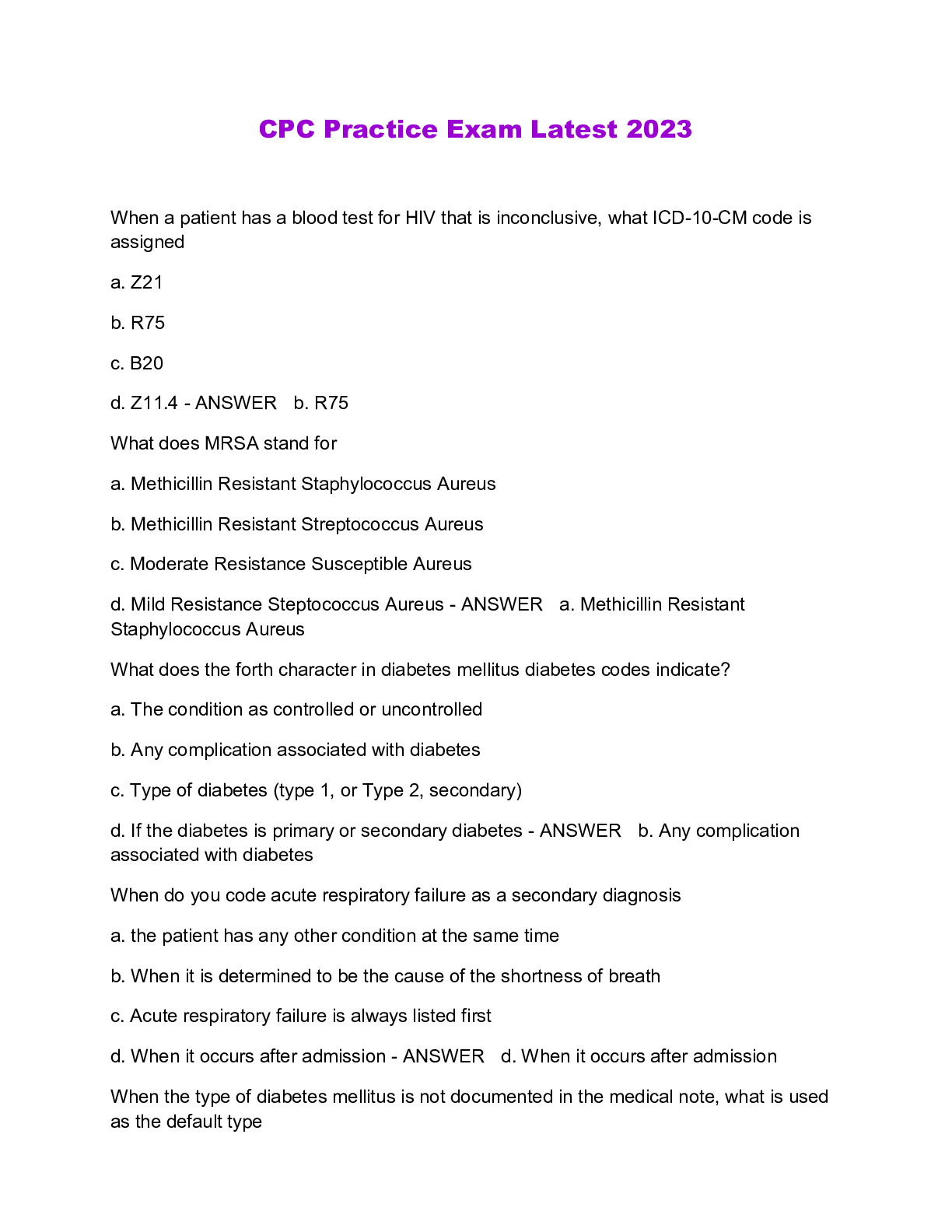Financial Accounting > QUESTIONS & ANSWERS > ACC650 Module 3 – Week 3 Quiz Activity-Based Costing; Complete solutions, Grand Canyon University. (All)
ACC650 Module 3 – Week 3 Quiz Activity-Based Costing; Complete solutions, Grand Canyon University.
Document Content and Description Below
ACC650 Module 3 – Week 3 Quiz Activity-Based Costing 1. Activity-based costing systems: A. Use a single, volume-based cost driver. B. Assign overhead to products based on the products’ relative... usage of direct labor. C. Often reveal products that were under- or over-costed by traditional costing systems. D. Typically use fewer cost drivers than more traditional costing systems. E. Have a tendency to distort product costs. 2. Burgeon uses an economic order quantity model and has determined an optimal order size of 500 units. Annual demand is 10,000 units, ordering costs are $50 per order, and holding costs are $4 per unit. The reorder point is: A. 25 packages. B. 50 packages. C. 100 packages. D. 203 packages. E. 225 packages. 3. Feinstein, Inc., an appliance manufacturer, is developing a new line of ovens that uses controlled-laser technology. The research and testing costs associated with the new ovens is said to arise from a: A. Unit-level activity. B. Batch-level activity. C. Product-sustaining activity. D. Facility-level activity. E. Competitive-level activity. 4. Burgeon uses an economic order quantity model and has determined an optimal order size of 500 units. Annual demand is 10,000 units, ordering costs are $50 per order, and holding costs are $4 per unit. The reorder point is: A. 25 packages. B. 50 packages. C. 100 packages. D. 203 packages. E. 225 packages. 5. St. James, Inc., currently uses traditional costing procedures, applying $800,000 of overhead to products Beta and Zeta on the basis of direct labor hours. The company is considering a shift to activity-based costing and the creation of individual cost pools that will use direct labor hours (DLH), production setups (SU), and number of parts components (PC) as cost drivers. Data on the cost pools and respective driver volumes follow. Product Pool No. 1 (Driver: DLH) Pool No. 2 (Driver: SU) Pool No. 3 (Driver: PC) Beta 1,200 45 2,250 Zeta 2,800 55 750 Pool Cost $160,000 $280,000 $360,000 6. In an activity-based costing system, direct materials used would typically be classified as a: A. Unit-level cost. B. Batch-level cost. C. Product-sustaining cost. D. Facility-level cost. E. Matrix-level cost. 7. Consider the following statements regarding traditional costing systems: I. Overhead costs are applied to products on the basis of volume-related measures. II. All manufacturing costs are easily traceable to the goods produced. III. Traditional costing systems tend to distort unit manufacturing costs when numerous goods are made that have widely varying production requirements. Which of the above statements is (are) true? A. I only. B. II only. C. III only. D. I and III. E. II and III 8. Alaina’s customer service department follows up on customer complaints by telephone inquiry. During a recent period, the department initiated 10,000 calls and incurred costs of $312,000. Of these calls, 3,800 were for the company’s wholesale operation; the remainder were for the retail division. Costs allocated to the wholesale operation are: A. $0. B. $31,200. C. $118,560. D. $193,440. E. $203,000. Costs $312,000 Total calls 10,000 Cost per call = 312,000 / 10,000 = $31.20 Wholesale division calls 3,800 Retail division cost = 3,800 x $31.20 = $118,560 9. Which of the following is classified as an inventory shortage cost? A. Purchase order preparation. B. Production disruption. C. Lost sales and lost customers. D. Spoilage. E. Production disruption, lost sales, and lost customers. 10. During a recent accounting period, Marty’s shipping department processed 26 orders. Each order typically takes four hours to complete; however, the average time increased to five hours because of various departmental inefficiencies. If shipping labor is paid $14 per hour, the company’s non-value-added cost would be: A. $0. B. $56. C. $364. D. $1,456. E. $1,820. 11. St. James, Inc., currently uses traditional costing procedures, applying $800,000 of overhead to products Beta and Zeta on the basis of direct labor hours. The company is considering a shift to activity-based costing and the creation of individual cost pools that will use direct labor hours (DLH), production setups (SU), and number of parts components (PC) as cost drivers. Data on the cost pools and respective driver volumes follow. Product Pool No. 1 (Driver: DLH) Pool No. 2 (Driver: SU) Pool No. 3 (Driver: PC) Beta 1,200 45 2,250 Zeta 2,800 55 750 Pool Cost $160,000 $280,000 $360,000 The overhead cost allocated to Beta by using traditional costing procedures would be: A. $240,000. B. $356,000. C. $444,000. D. $560,000. E. Some other amount. 12. Inventory holding costs typically include: A. Clerical costs of purchase-order preparation. B. Costs of deterioration, theft, or spoilage. C. Costs associated with lost sales to customers. D. Forgone interest on money tied up in inventory. E. Costs of deterioration, theft, or spoilage and forgone interest on money tied up in inventory. 13. at the economic order quantity: A. Total annual inventory costs, holding costs, and ordering costs are all minimized. B. Total annual inventory costs and holding costs are minimized. C. Total annual inventory costs are minimized, and holding costs equal ordering costs. D. Total annual inventory costs are minimized, and holding costs exceed ordering costs. E. Total annual inventory costs are minimized, and ordering costs exceed holding costs. 14. Aladdin’s customer service department follows up on customer complaints by telephone inquiry. During a recent period, the department initiated 7,000 calls and incurred costs of $203,000. If 2,940 of these calls were for the company’s wholesale operation (the remainder were for the retail division), costs allocated to the wholesale operation should amount to: A. $0. B. $29. C. $85,260. D. $117,740. E. $203,000. 15. Alamo’s customer service department follows up on customer complaints by telephone inquiry. During a recent period, the department initiated 7,000 calls and incurred costs of $203,000. If 2,940 of these calls were for the company’s wholesale operation (the remainder were for the retail division), costs allocated to the retail division should amount to: A. $0. B. $29. C. $85,260. D. $117,740. E. $203,000. Costs $203,000 Total calls 7,000 Cost per call = 203,000 / 7,000 = $29 Retail division calls 4,060 (7,000 – 2,940) Retail division cost = 4,060 x $29 = $117,740 16. St. James, Inc., currently uses traditional costing procedures, applying $800,000 of overhead to products Beta and Zeta on the basis of direct labor hours. The company is considering a shift to activity-based costing and the creation of individual cost pools that will use direct labor hours (DLH), production setups (SU), and number of parts components (PC) as cost drivers. Data on the cost pools and respective driver volumes follow. Product Pool No. 1 (Driver: DLH) Pool No. 2 (Driver: SU) Pool No. 3 (Driver: PC) Beta 1,200 45 2,250 Zeta 2,800 55 750 Pool Cost $160,000 $280,000 $360,000 The overhead cost allocated to Zeta by using traditional costing procedures would be: A. $240,000. B. $356,000. C. $444,000. D. $560,000. E. Some other amount. 17. Consider the following statements: I. Product diversity creates costing problems because diverse products tend to utilize manufacturing activities in different ways. II. Overhead costs that are not incurred at the unit level create costing problems because such costs do not vary with traditional application bases such as direct labor hours or machine hours. III. Product diversity typically exists when a single product (e.g., a ballpoint pen) is made in different colors. Which of the above statements is (are) true? A. I only. B. II only. C. I and II. D. I and III. E. II and III. 18. Consider the following statements: I. Product diversity creates costing problems because diverse products tend to utilize manufacturing activities in different ways. II. Overhead costs that are not incurred at the unit level create costing problems because such costs do not vary with traditional application bases such as direct labor hours or machine hours. III. Product diversity typically exists when a single product (e.g., a ballpoint pen) is made in different colors. Which of the above statements is (are) true? A. I only. B. II only. C. I and II. D. I and III. E. II and III. 19. Which of the following is classified as an inventory shortage cost? A. Purchase order preparation. B. Production disruption. C. Lost sales and lost customers. D. Spoilage. E. Production disruption, lost sales, and lost customers. 20. Which of the following does not minimize ordering costs when using JIT purchasing? A. Reducing the number of vendors. B. Negotiating long-term supply agreements. C. Making less frequent payments. D. Maintaining a safety stock. E. Eliminating inspections. 21. Inventory holding costs typically include: A. Clerical costs of purchase-order preparation. B. Costs of deterioration, theft, or spoilage. C. Costs associated with lost sales to customers. D. Forgone interest on money tied up in inventory. E. Costs of deterioration, theft, or spoilage and forgone interest on money tied up in inventory. 22. In an activity-based costing system, direct materials used would typically be classified as a: A. Unit-level cost. Because in an Activity based cost approach, overhead cost is allocated on the basis of Activity driver. However, direct material cost is charged on the basis of number of units. B. Batch-level cost. C. Product-sustaining cost. D. Facility-level cost. E. Matrix-level cost. 23. The following tasks are associated with an activity-based costing system: 1— Assignment of cost to products 2— Calculation of pool rates 3— Identification of cost drivers 4— Identification of cost pools Which of the following choices correctly expresses the proper order of the preceding tasks? A. 1, 2, 3, 4. B. 2, 4, 1, 3. C. 3, 4, 2, 1. D. 4, 2, 1, 3. E. 4, 3, 2, 1. [Show More]
Last updated: 1 year ago
Preview 1 out of 7 pages
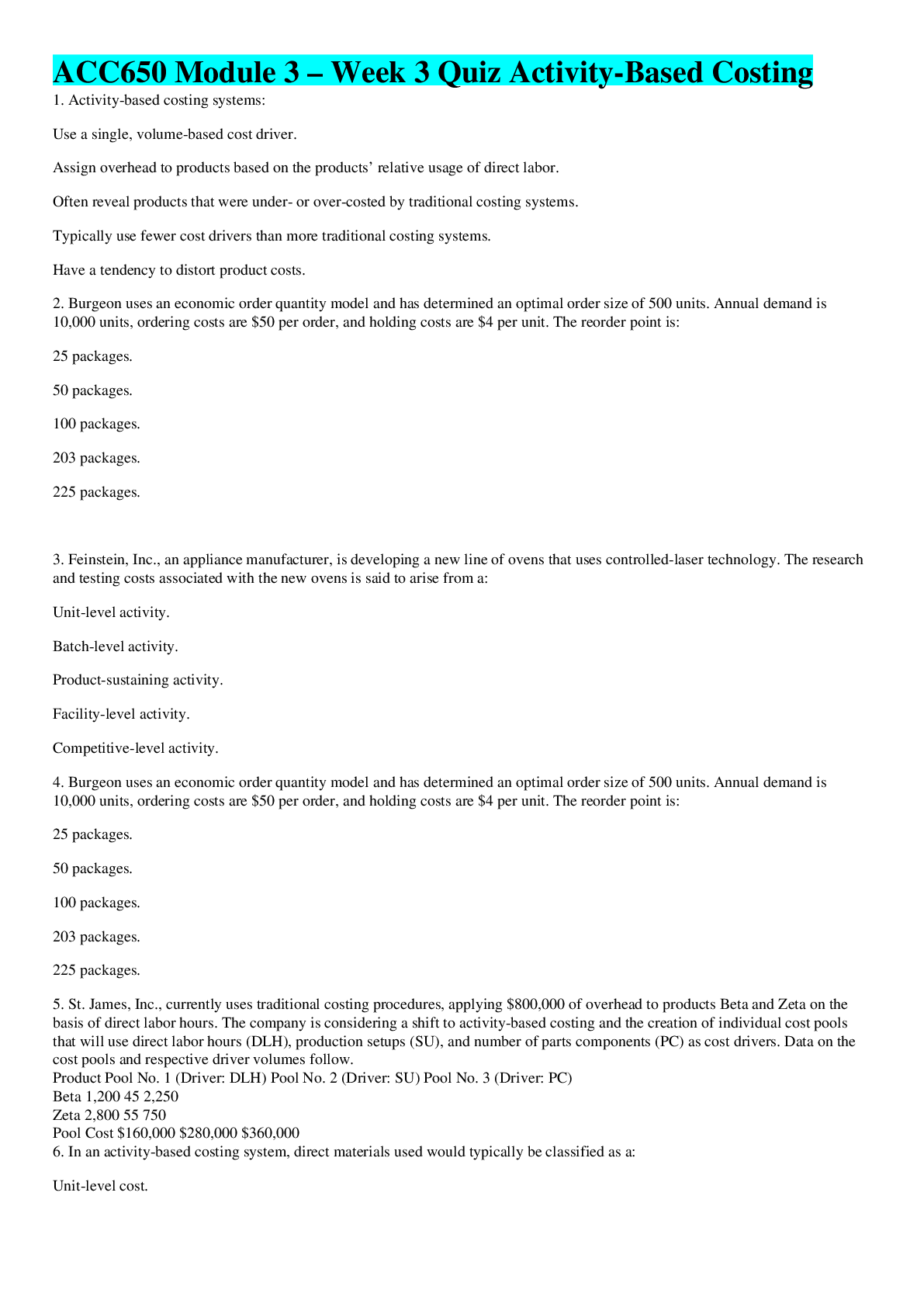
Reviews( 0 )
Document information
Connected school, study & course
About the document
Uploaded On
May 01, 2020
Number of pages
7
Written in
Additional information
This document has been written for:
Uploaded
May 01, 2020
Downloads
0
Views
26

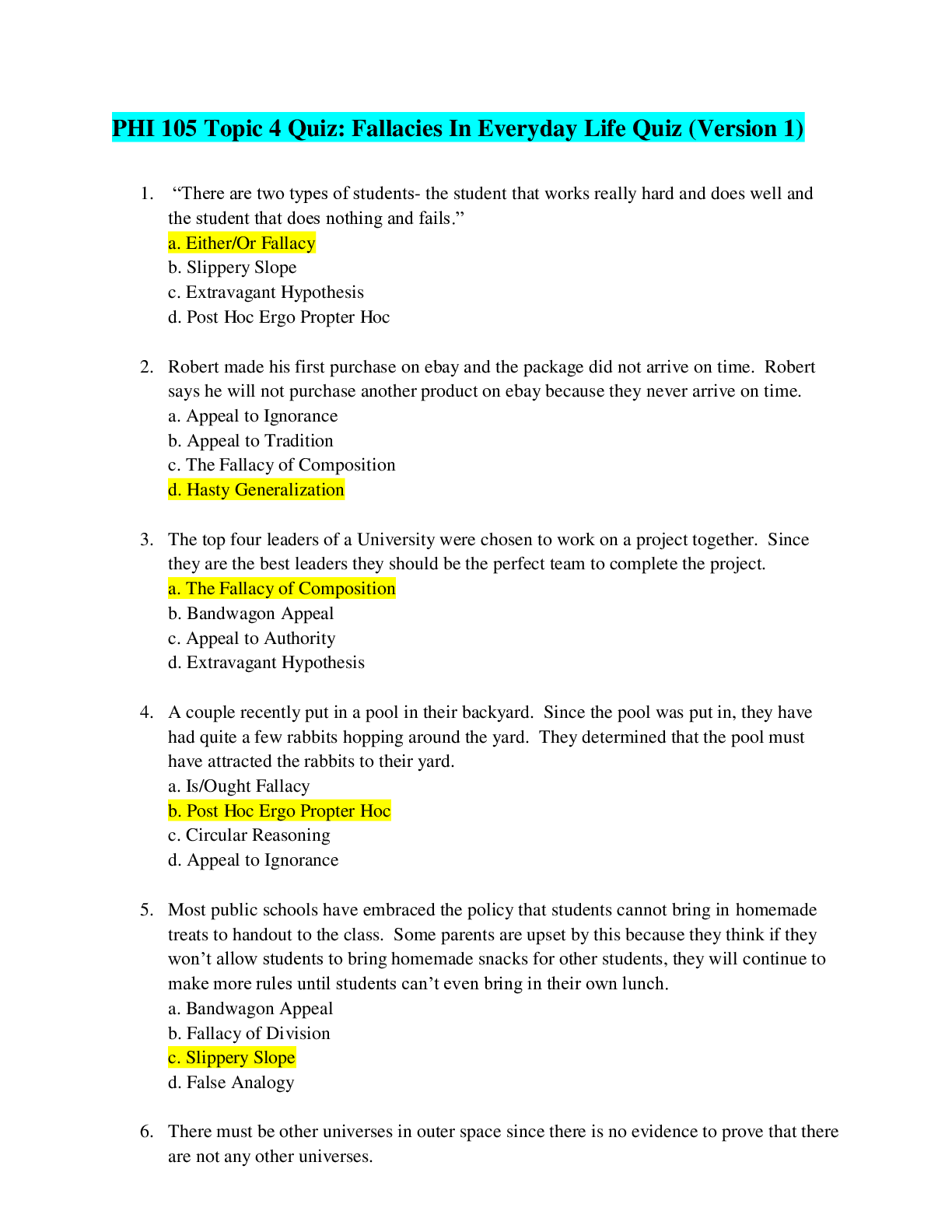


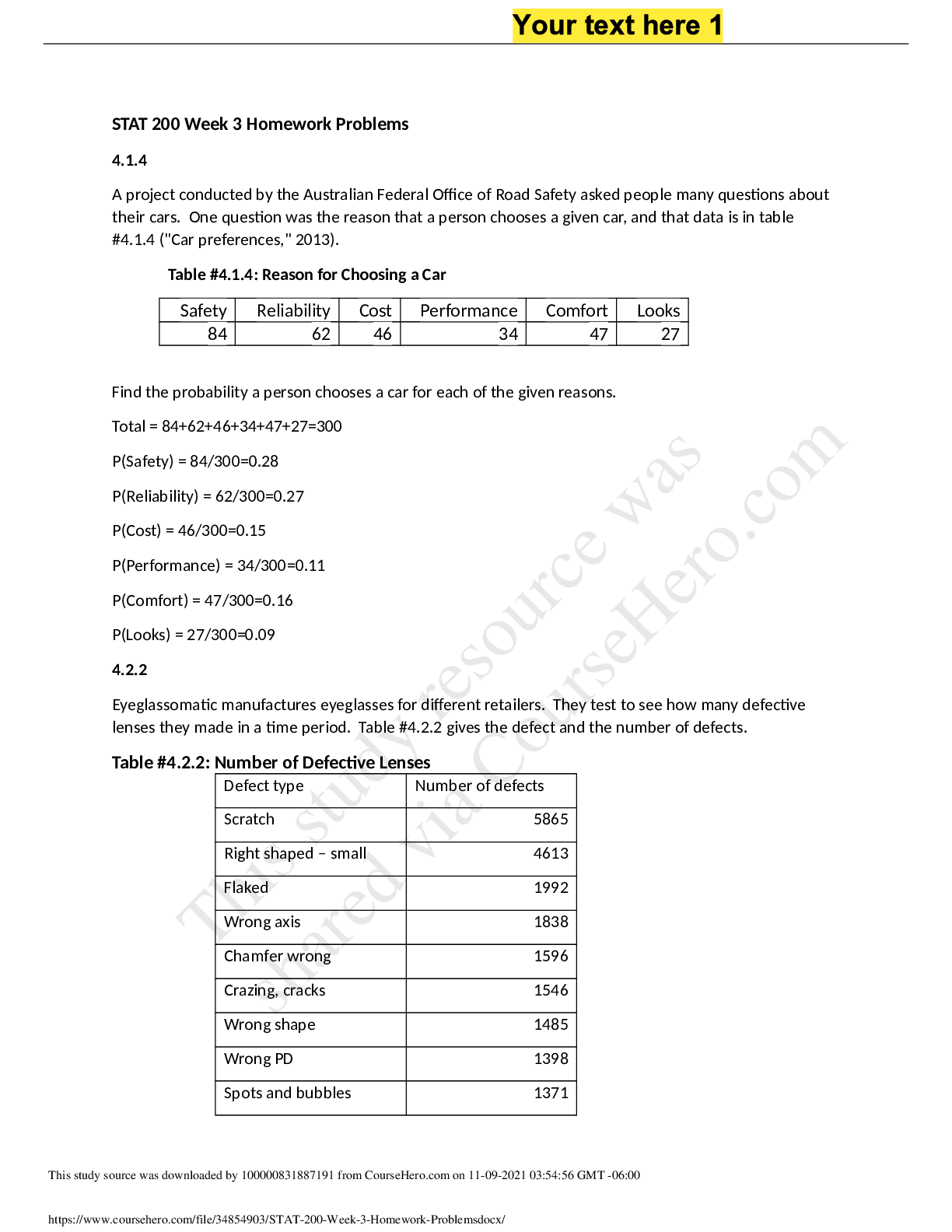
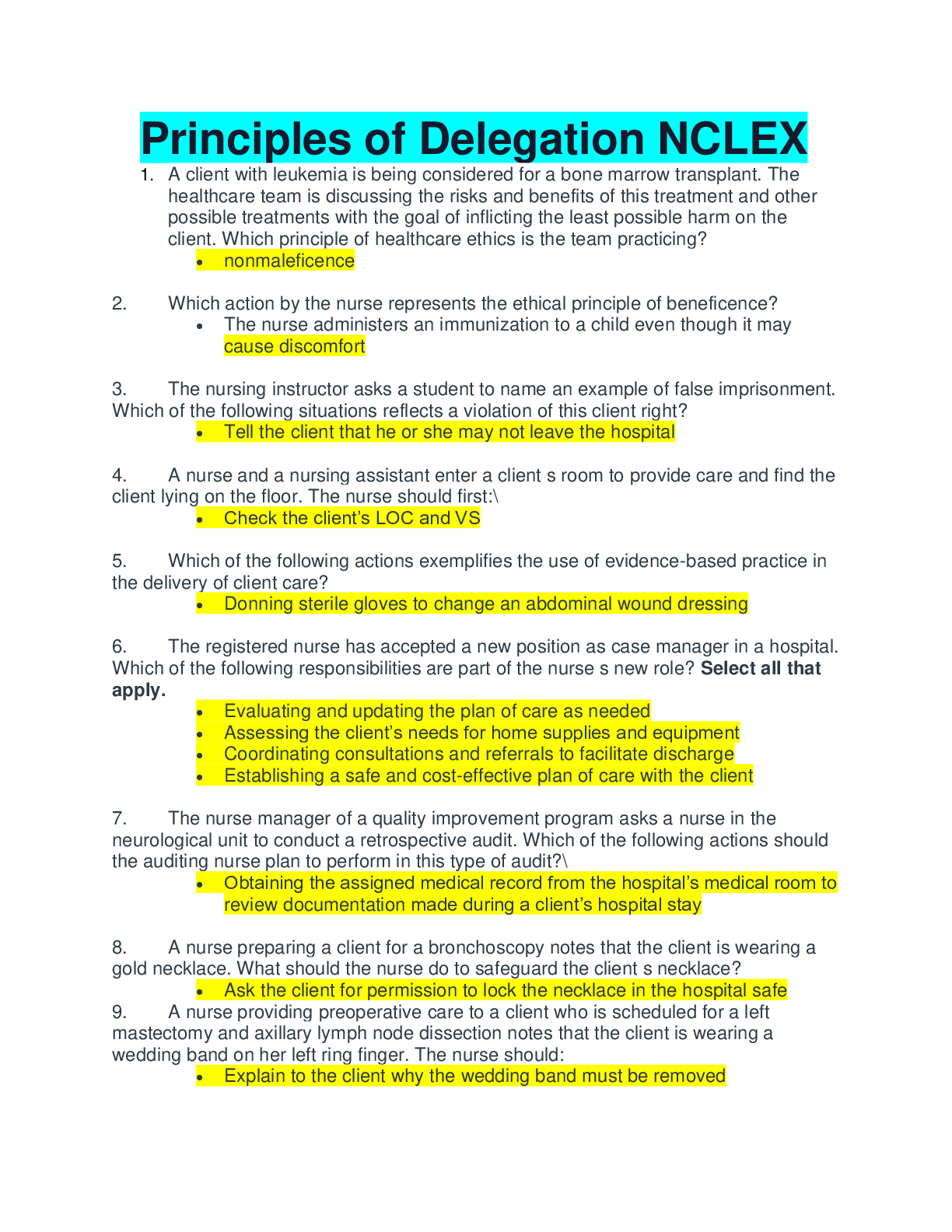
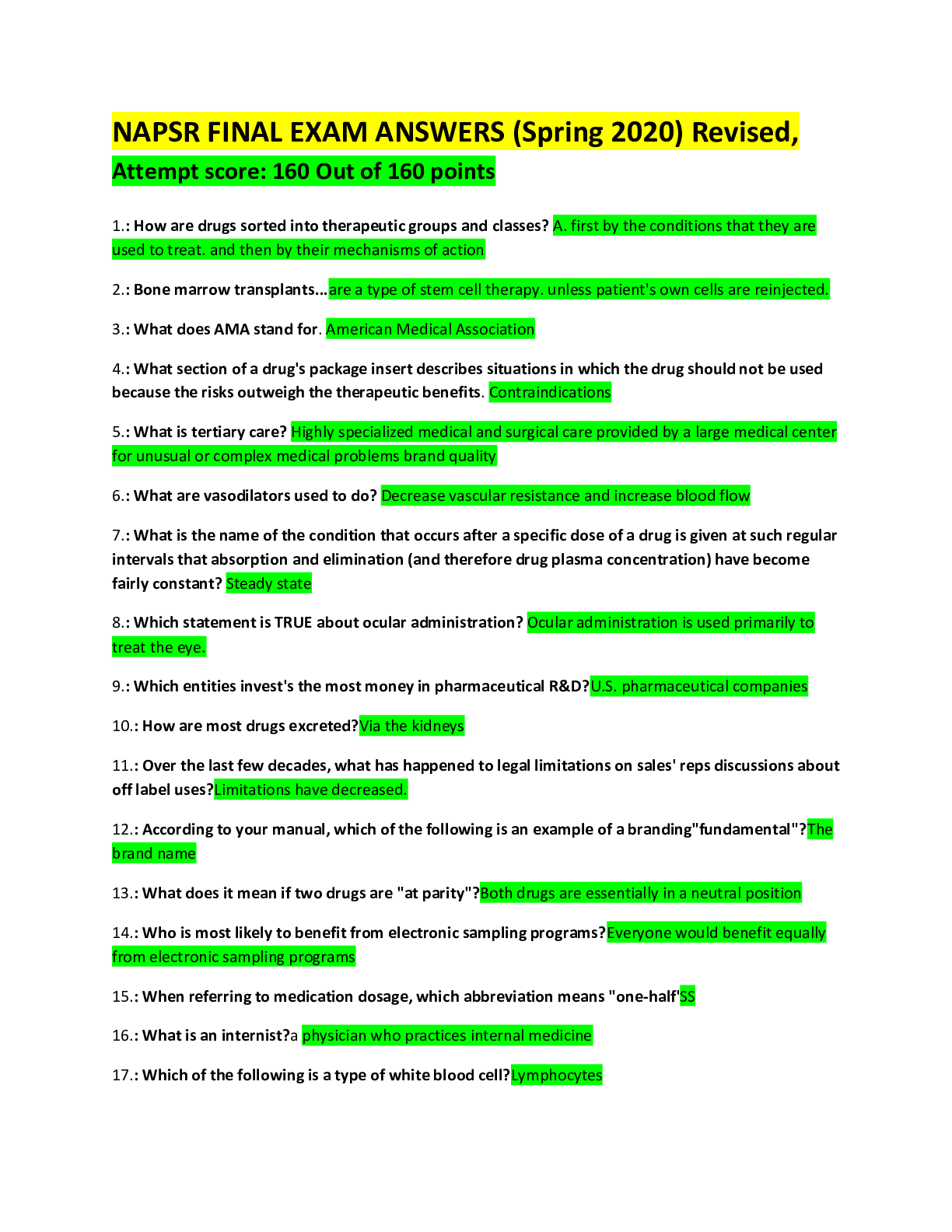
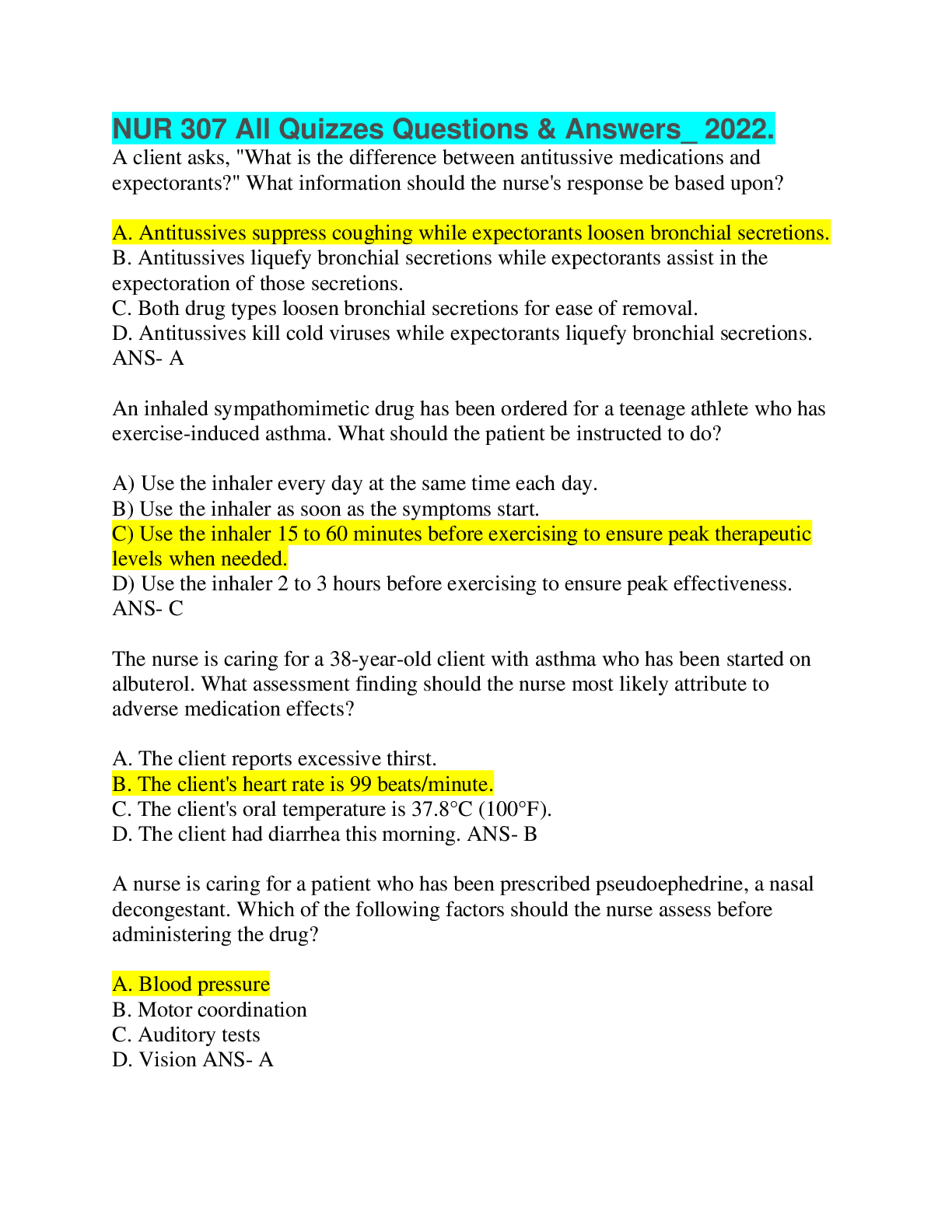
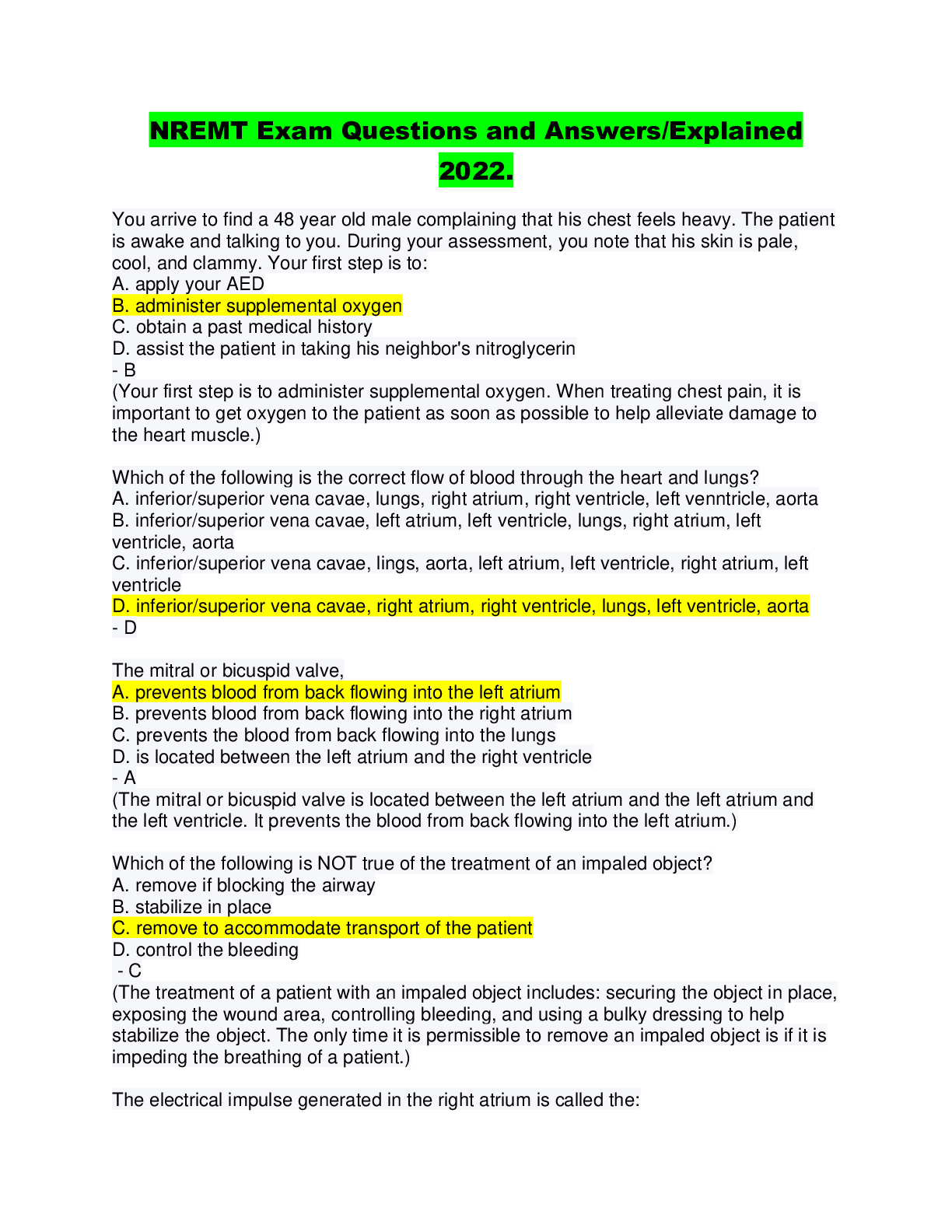

.png)
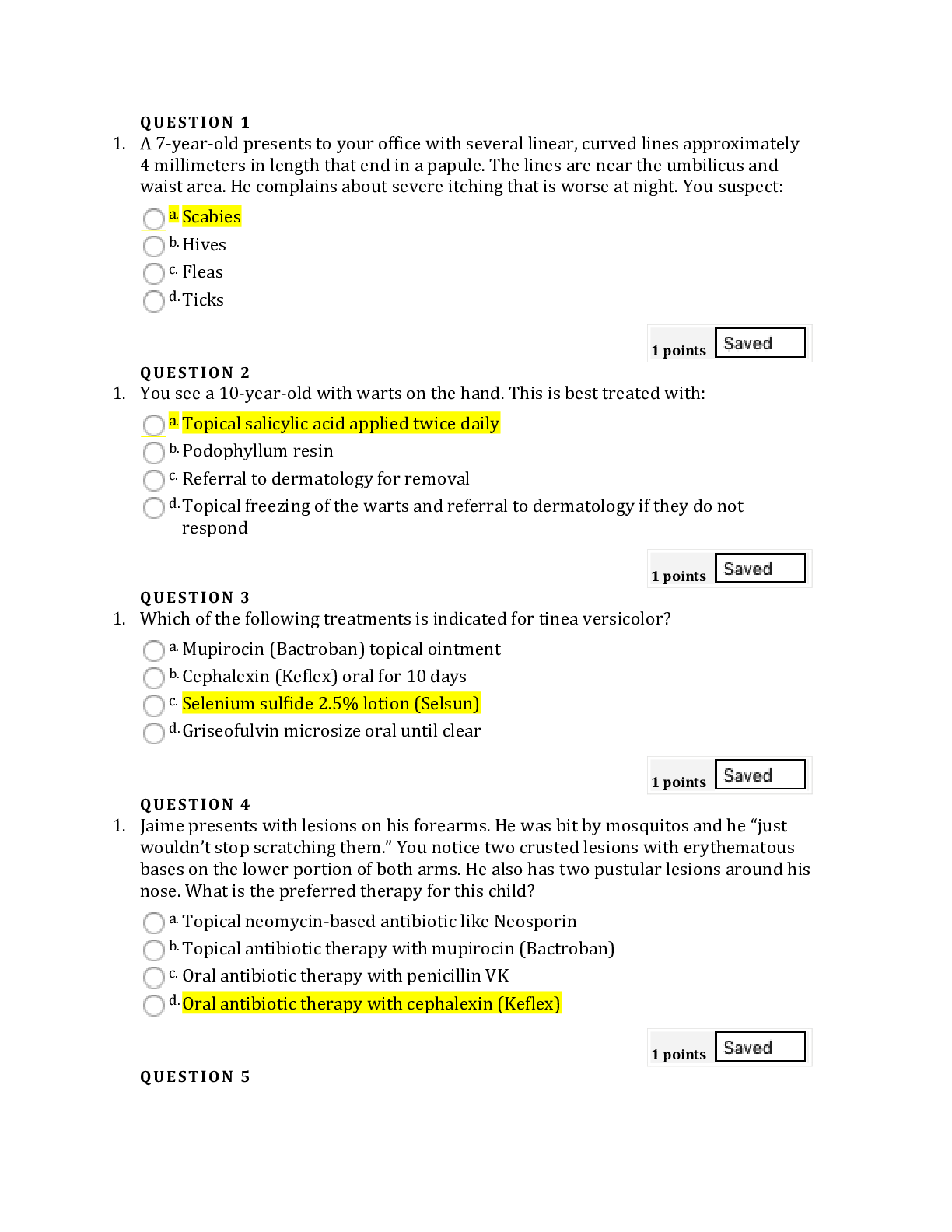
.png)
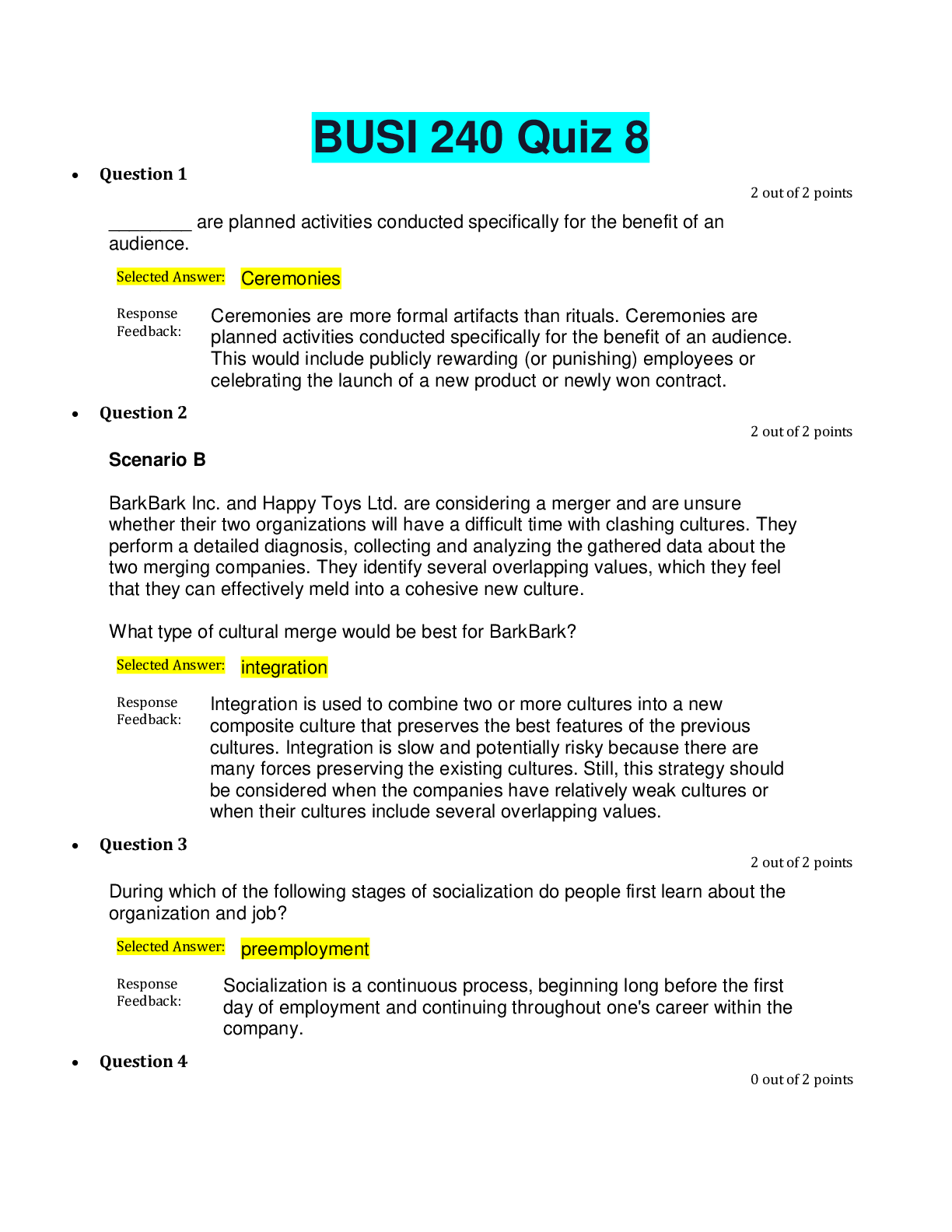
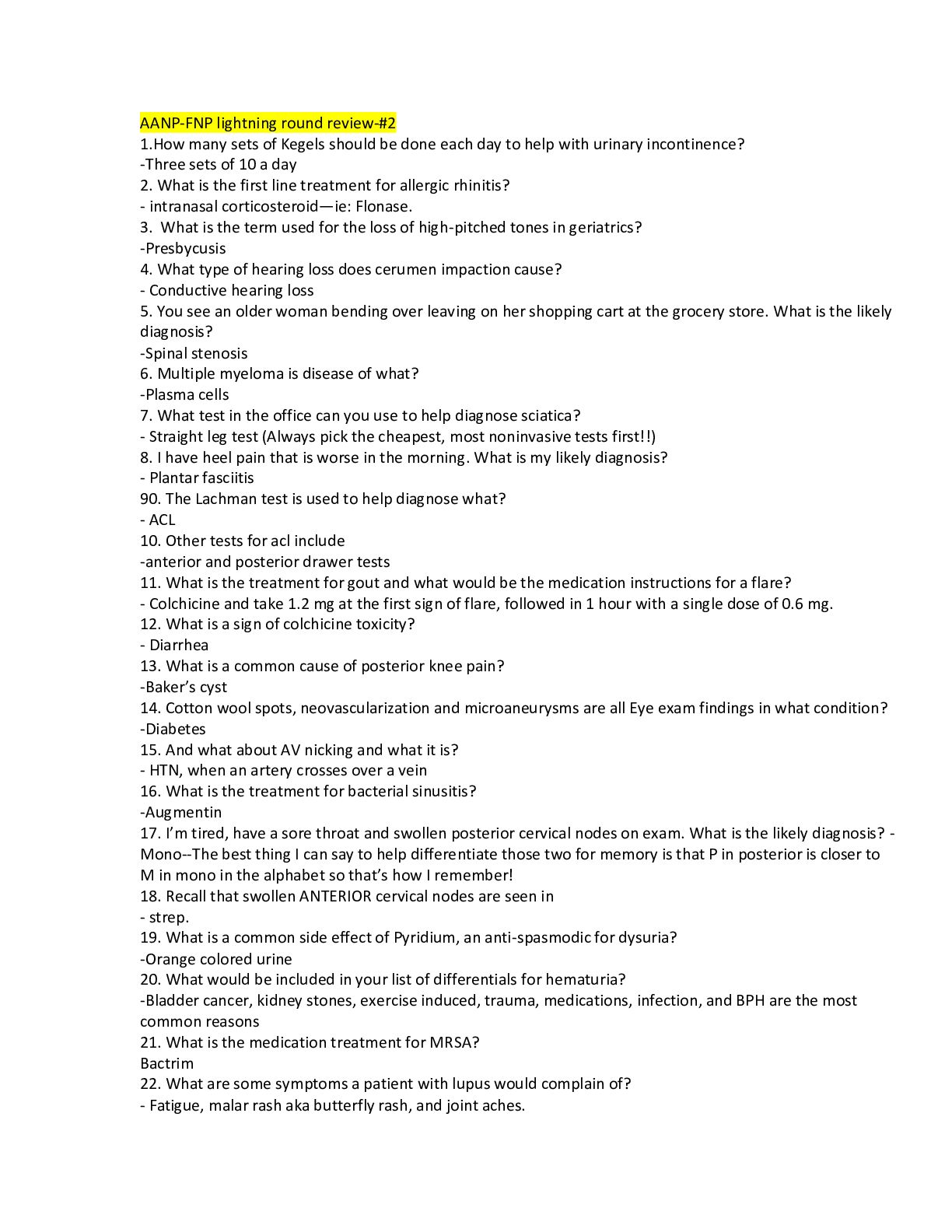
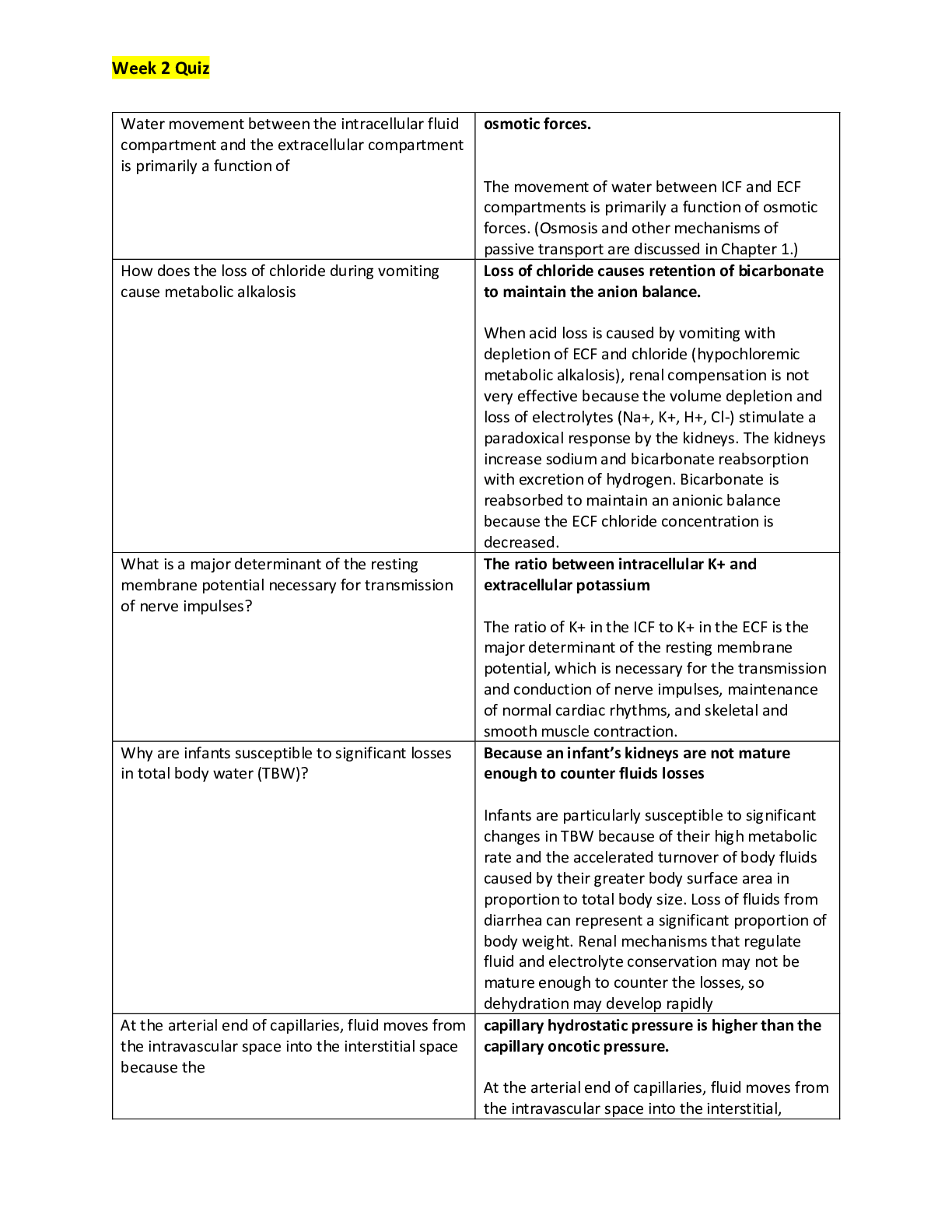
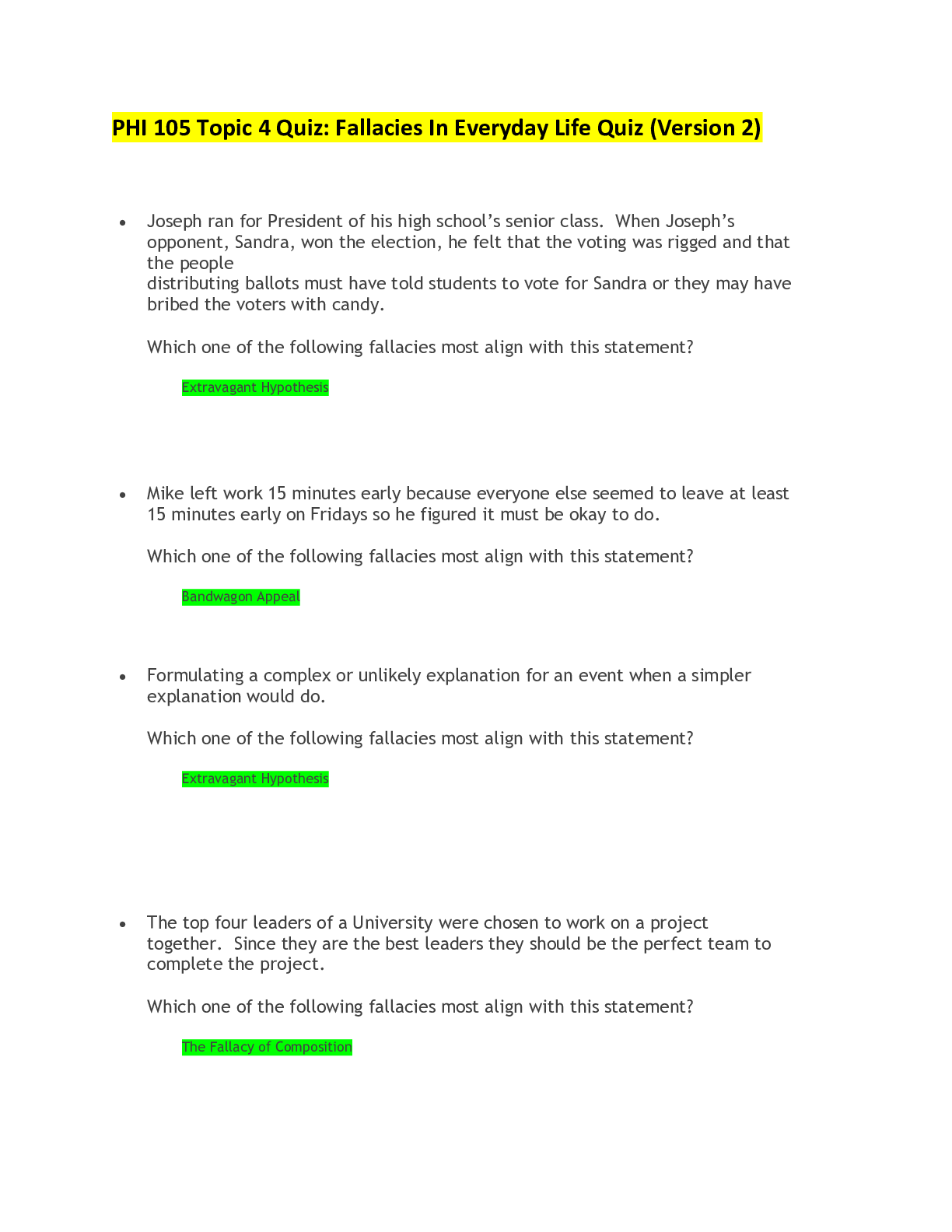
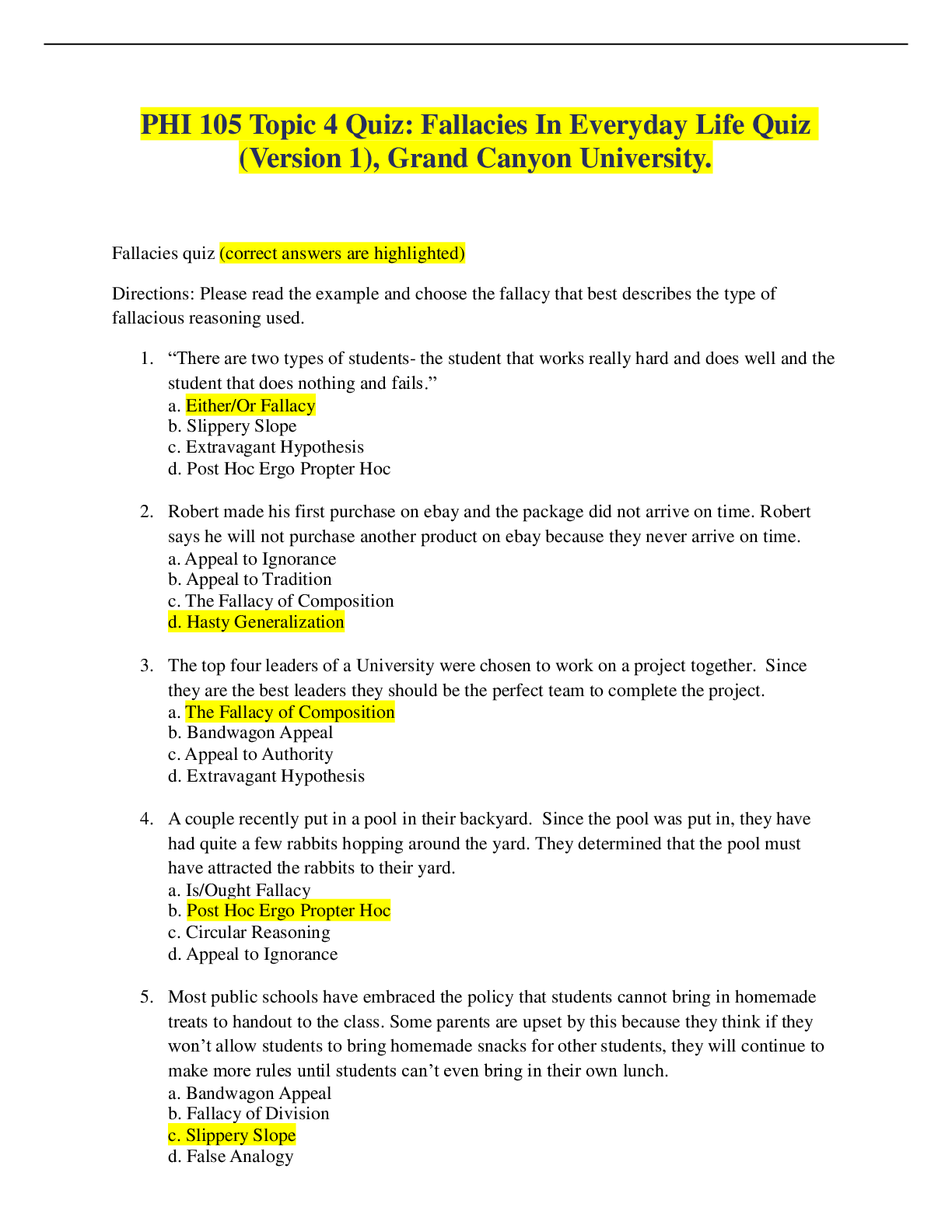

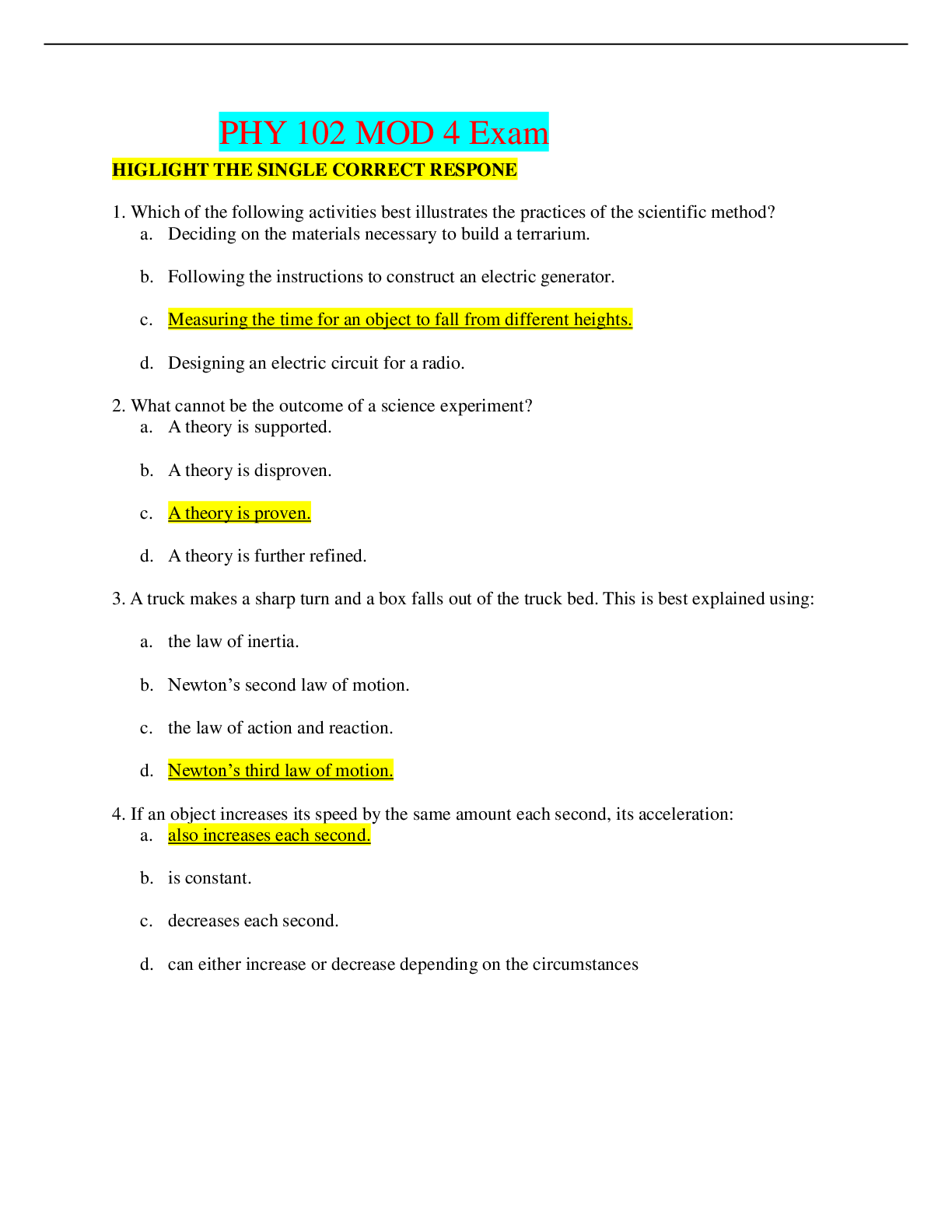

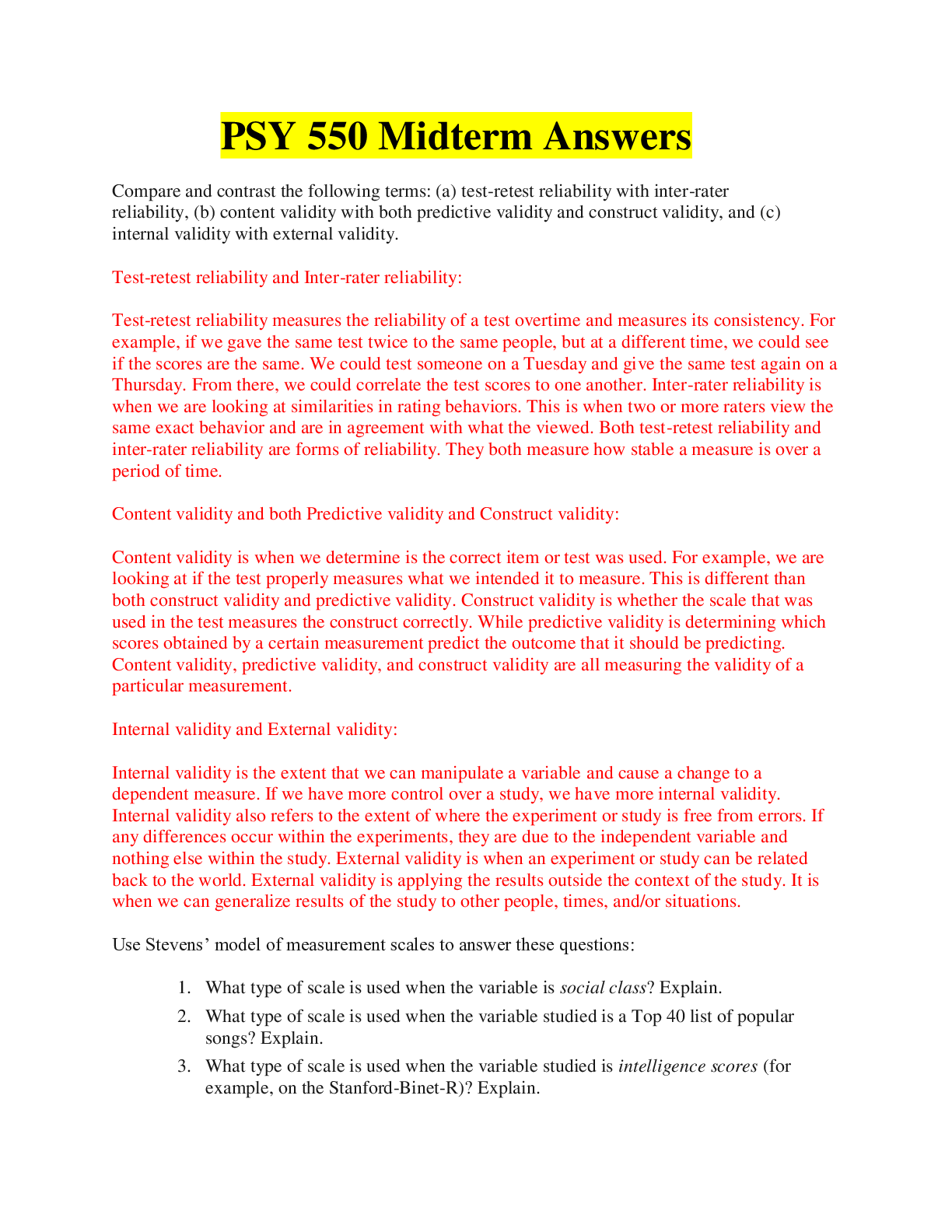
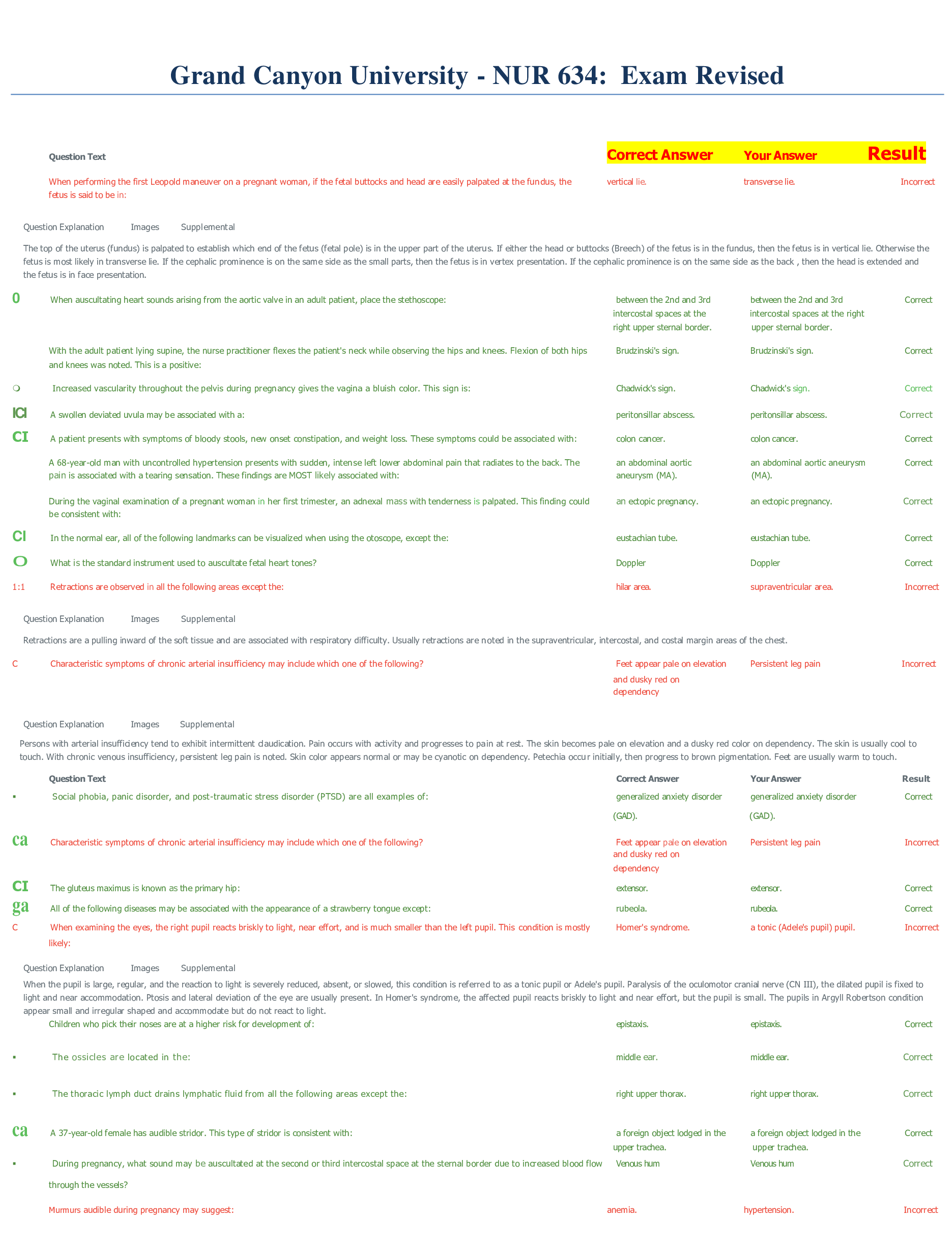
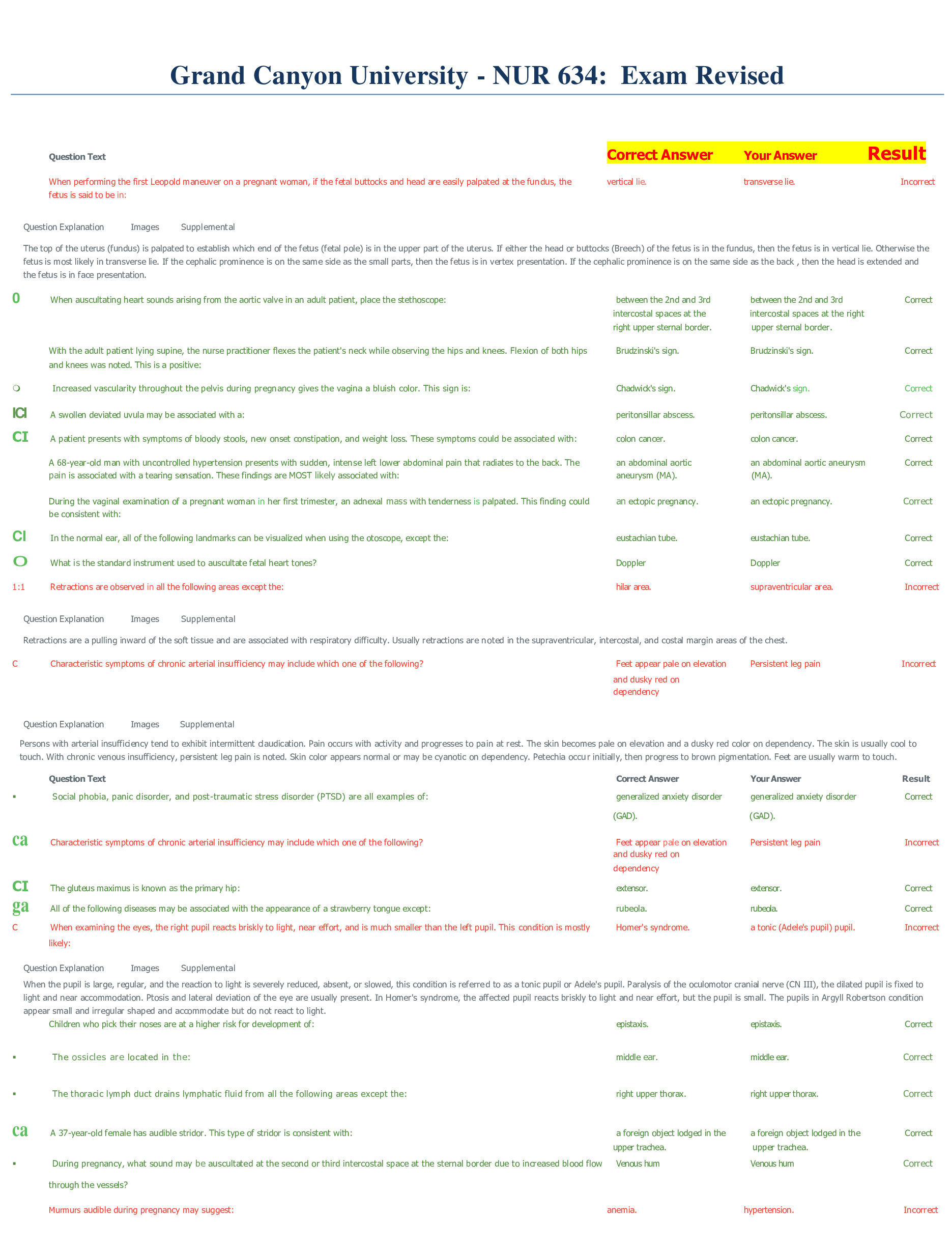

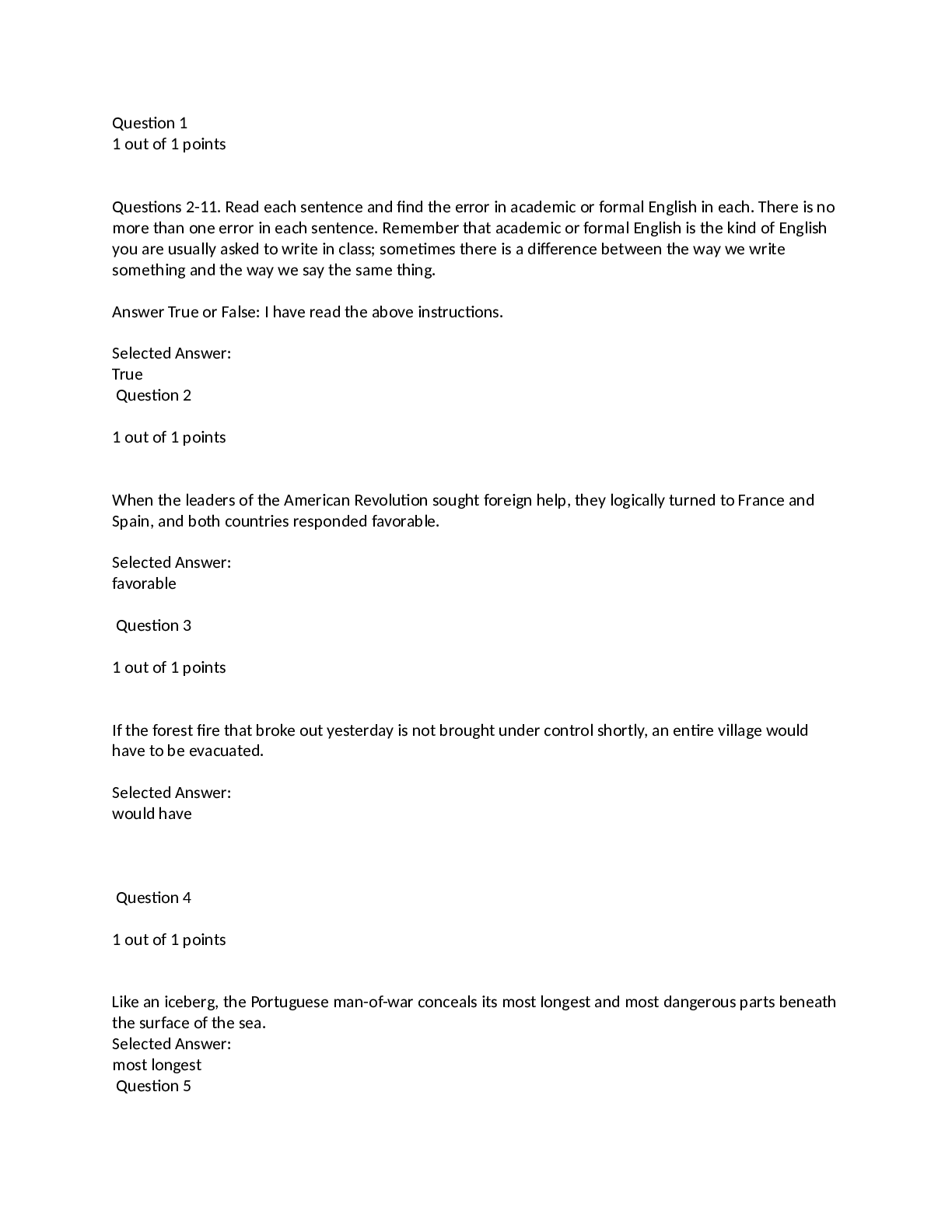
.png)
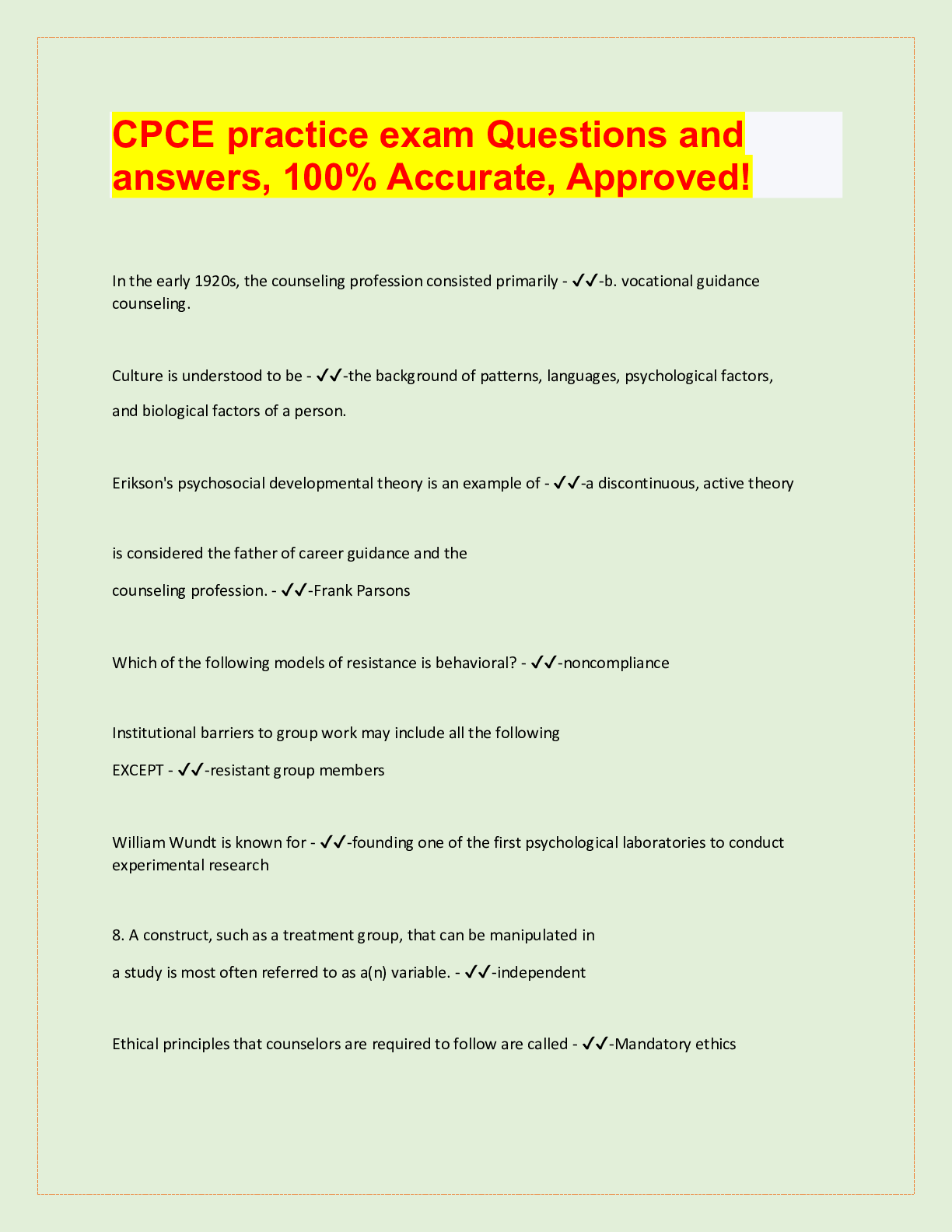
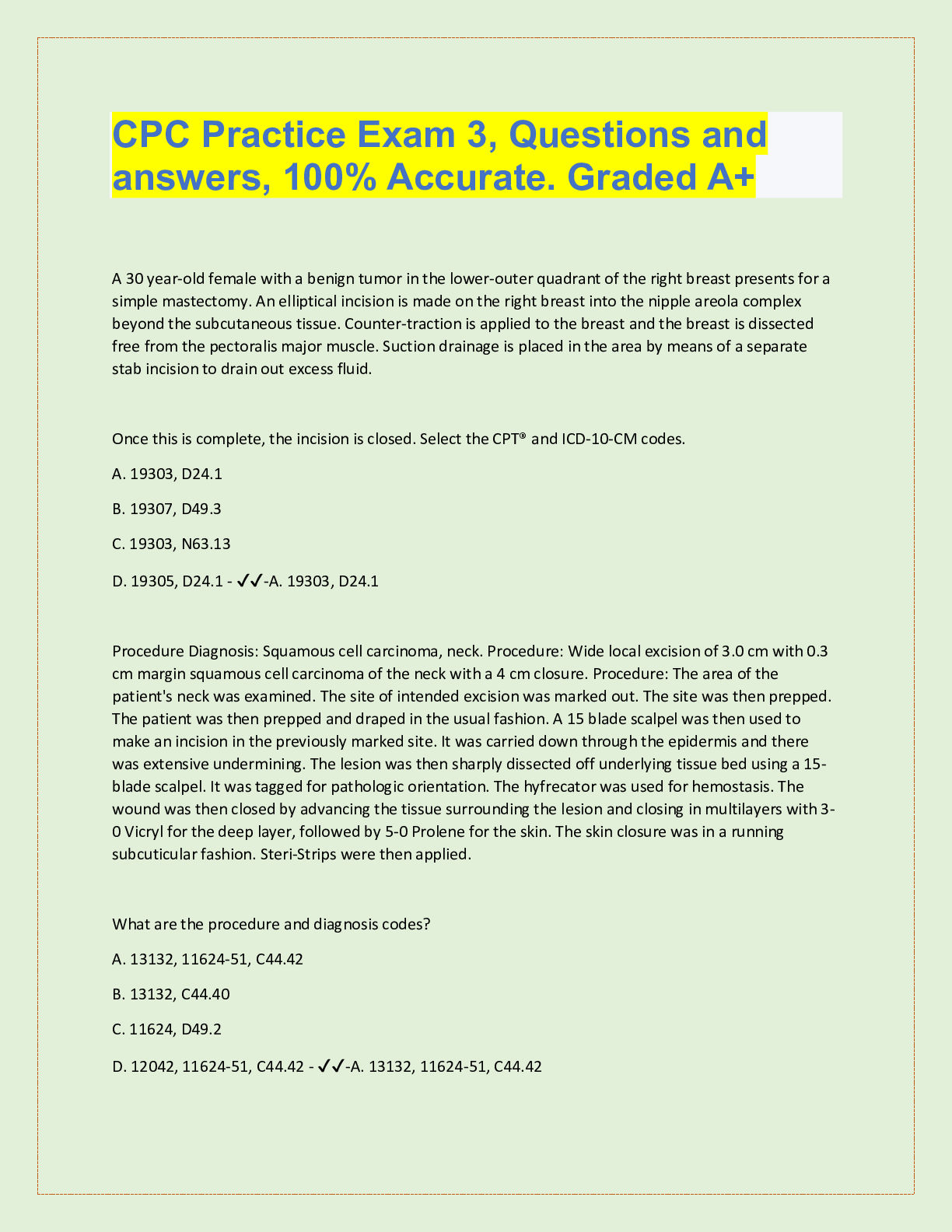
.png)

